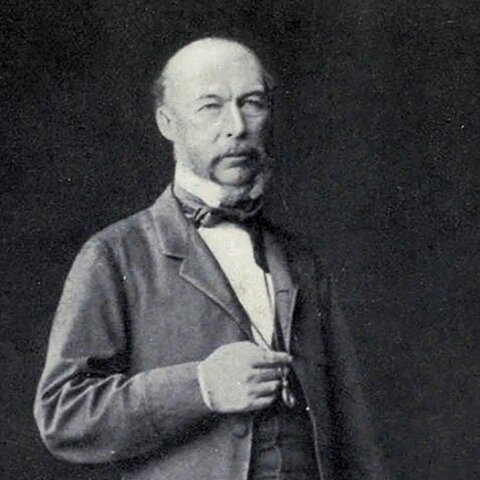James Fergusson

James Fergusson (22 Jan. 1808, Ayr, Scotland — 9 Jan. 1886, London, Great Britain) was a Scottish businessman and planter in India, and a self-taught architect whose fascination with the “True [or Pure, or Natural] Style” in Indian arts led him to write his monumental History of Indian and Eastern Architecture, first published in 1876, with a 1891 edition including several drawing plates made from his fellow countryman John Thomson’s photographs. Incidentally, Fergusson based his chapter on Cambodian architecture on the notes taken by Thomson and Kennedy during their visit to Angkor.
A fellow of the Royal Society, the Royal Institute of British Architects and a member of the Society of Dilettanti (1), he funded his Indianist studies with the income of his indigo plantation in Calcutta and Jessore between 1829 and 1934. Back to Europe, he settled in London, where he built an impressive Italianate home (very much in the ‘Renaissance man’ manner of the Enlightnement, developed his theory of ‘natural architecture’ — linked to the art of agriculture, based on ‘common sense’ –, and developed his library on India, Bengal and the Far East.
(1) The Society of Dilettanti was a rather informal British gentlemen’s club which has existed from 1742 to these days. On 14 April 1743 Horace Walpole provided a succinct summary of the group’s early reputation in a letter to Horace Mann, claiming that the Society of Dilettanti was ‘a club, for which the nominal qualification is having been in Italy, and the real one being drunk; the two chiefs are Lord Middlesex and Sir Francis Dashwood, who were seldom sober the whole time they were in Italy’ (Walpole, Corr., 18.211). Yet these merry and enlightened gentlemen quickly engaged in more serious endeavors, for instance sponsoring a first expedition to Greece which came back with the reference sum Antiquities of Athens. From then, the club of wealthy ‘dilletanti’ with a fondness for ancient arts and civilizations contributed to research publications and antiquities collecting, donating a significant part of its collections to the Victoria and Albert Museum in the 1910s.
- Related Books
